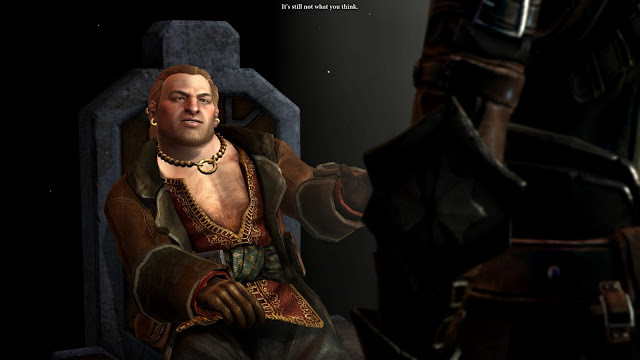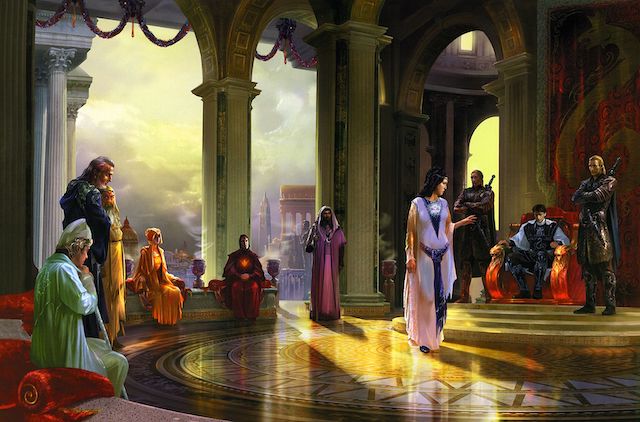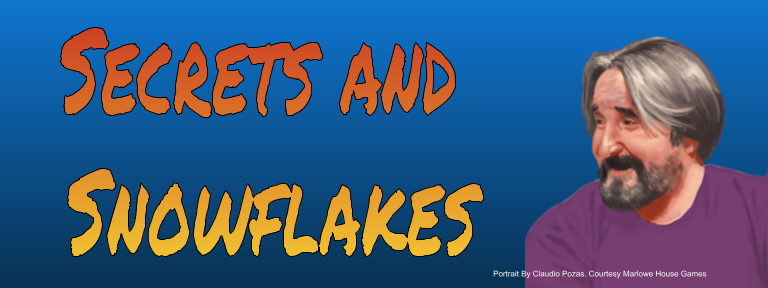Stories can be told in a wide variety of ways using flash-backs, flash-forwards, skipping to the side to tell a part of the narrative from a different character’s point of view but in RPGs we often only tell stories in the most linear way. We progress forward from the first scene in an (effectively) single point of view (the party) to the campaign’s conclusion. Shaking up the straight-line forward momentum of a campaign can sometimes help hide the narrative rails.
Now, this isn’t to say groups never use non-linear storytelling techniques but a few are hard to include. Of the non-linear tools GMs can use, flash-forwards can be one of the most difficult. Because flash-forwards assume that all the involved PCs will still be alive in the future when the scene occurs. That certainty of survival can detrimentally affect a player’s fear for their character. The stakes are necessarily lowered because now the flash-forward POV character(s) can’t die.
Funny thing is the stakes don’t have to drop significantly. When playing an AP or an epic home-brew the stakes include the lives of the player characters but not exclusively. Typically there’s a runelord, giant, demon horde or some other threat to the larger world that requires the PCs to be successful. Ultimately, these campaign level stakes are more important to the success of the overall story than individual life of any single PC. Especially, since there are fates that players my fear as much or more than character death. If you set up a flash-forward that seems to shelter the player characters make sure it doesn’t also lock in their overall victory or protect the PC from other difficult fates.
Now, video game RPGs by necessity are pretty on-the-rails experiences and yet we do see some interesting uses of flash-forwards. The Assassin’s Creed series takes the flash-forward to an extreme where the time shift takes us to a distant future where the primary storyline characters are long dead. One of my favorite uses of the flash-forward technique in games comes from the Dragon Age franchise. In Dragon Age 2 Bioware utilized a narrative framework that had a follower NPC, Varric, being interrogated by a Seeker sent by the Chantry. The action of the game was presented as Varric’s version of past events. This allowed the story to easily jump periods of time, where not much of importance occurs. This format also allowed the designers to set Varric as an unreliable narrator once or twice and boost the main character’s abilities for a scene or two.
In a recent campaign, I had the opportunity to insert a flash-forward scene. The game is an over-the-top anime-inspired fantasy Wild West with magical suits of power armor. Despite already being pretty over the top, for one short storyline, I thought that maybe we’d jumped a shark. So after a break in the action, I quickly switched scenes and had one PCs mentor incredulously ask the PCs if they were serious. As we’ve played on through this storyline I’ve popped back to this future scene a few more times. The most recent occurred at the end of a session where rather than fight a group of powerful stone giants the PCs talked their way around the creatures. When I returned to the future scene I drew the player’s attention to a newspaper article that showed a pair of stone giants rampaging a nearby town.
My player’s realized then that while they may be safe from death, the world wouldn’t be immune to the consequences of their actions.
It can be fun to use a flash-forward scene like Bioware did with Dragon Age to set up a scene with an unreliable narrator and amp up the power of your game for a session or two, either by boosting the PCs level significantly or road testing the mythic rules. The unreliable narrator and built-in player safety means everyone can really ham it up and crank up the nonsense without ruining the actual events of the campaign. When we finish the current storyline in my campaign I’ll have a sit down with my players and we’ll discuss what likely happened for real and what they might have exaggerated (if any of it.) They won’t be able to undo any of the consequences but other then I’ll give them the agency to describe what really happened.
If a character involved in a flash-forward dies you may need to do some quick thinking. One obvious option is to have it look like the character died but maybe pure luck, a mysterious benefactor, or some force intervenes. This intervening power need not be benevolent. The character may come to locked in a cage or indebted to a powerful spell caster with dubious motives.
Another option is to take the flash-forward scene and turn what the players thought they knew on its ear. If the scene had seemed to be a friendly conversation with a PCs mentor where the party is sharing war stories over drinks. It would be shocking for the players to suddenly discover that the relaxed and familiar surroundings were but a facade to make the dead PC feel more comfortable as they defended their life to the powers that determine a soul’s ultimate fate in the afterlife.
Variety can really liven up a campaign so I encourage GMs to try injecting some non-linear storytelling to their campaigns whether it be a flash-back, side story or flash-forward. In the case of the latter option, I hope this article was of some use or inspiration.







